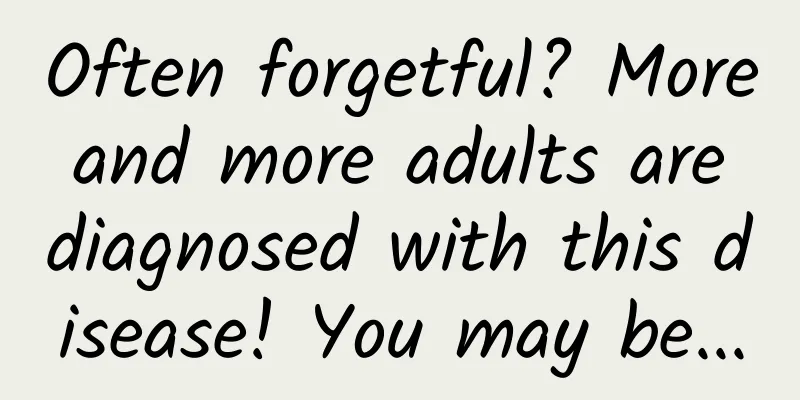Can gynecological diseases cause breast pain?

|
Gynecological diseases are common sexual diseases in women, and there are many causes of gynecological diseases. Generally, they are caused by long-term neglect of physical hygiene or unclean sexual life. Gynecological diseases basically do not cause breast pain, or only some gynecological diseases will cause breast pain, and the breast pain is caused by other breast diseases, which require a detailed examination. Can gynecological inflammation cause breast pain? Gynecological inflammation rarely causes breast tenderness, but it may cause breast tenderness in a few cases, such as severe adnexitis, pelvic inflammatory disease, and endometritis. Due to the inflammatory stimulation leading to ovulation disorders or irregular menstruation, abnormal hormone levels in the body can cause congestion of the milk ducts, soreness, swelling, and pain. In addition, gynecological inflammation can cause abnormal emotions in women, depression, and poor sleep, which can cause qi to accumulate in the breasts, which in turn can cause breast pain and discomfort. You should usually keep a good mood. Causes of breast tenderness Causes and common diseases 1. Pathological (1) Breast hyperplasia: The main cause of the disease is endocrine hormone imbalance. Breast tissue is very sensitive to hormones, and breast tenderness is often the first symptom that patients with breast hyperplasia seek medical attention. Breast hyperplasia may be accompanied by breast lumps, menstrual disorders (delayed, scanty, light-colored menstruation), nipple discharge, emotional changes (bad temper, irritability, mental tension), etc. Therefore, normal breast pain should be distinguished from breast hyperplasia to avoid delaying treatment. (2) Mastitis: Mastitis is divided into lactation mastitis and non-lactation mastitis. Common acute mastitis often occurs in lactating women, especially primiparas. It is an acute breast inflammation caused by bacterial infection during lactation, with typical symptoms of local redness, swelling, heat and pain. Symptoms such as chills, fever, fatigue, and loss of appetite may occur throughout the body. If a breast abscess forms, fluid levels can be seen on ultrasound and pus can be drawn out by puncture. (3) Breast cancer: Breast cancer mostly occurs in women between 40 and 60 years old, and the incidence rate is higher in women before and after menopause. Early breast cancer is often painless, while painful breast cancer often indicates advanced stage. Studies have shown that the detection rate of breast cancer will increase in postmenopausal women who experience breast pain accompanied by gland thickening. Of course, when the tumor is accompanied by inflammation, there may also be swelling or tenderness. If the advanced tumor invades the nerves or the axillary lymph nodes compress or invade the brachial plexus, shoulder pain may occur. Breast cancer is also accompanied by breast lumps, nipple discharge, nipple changes, skin changes, and swollen axillary lymph nodes. 2. Physiological (1) Breast pain during adolescence: During adolescence, breast development begins with nipple swelling, followed by the appearance of pea- to bean-sized dome-shaped nodules in the breast tissue under the nipple, which are slightly painful. After menarche, it will disappear on its own as the breasts mature. (2) Premenstrual breast pain: More than half of women experience breast fullness, hardness, and tenderness before menstruation. In severe cases, the breasts may become swollen and painful even with the slightest vibration or collision, and the original granular or nodular feeling may become more obvious. The pain usually subsides after menstruation. (3) Breast tenderness and pain during pregnancy: Some women experience breast tenderness and pain around 40 days after becoming pregnant due to breast hyperplasia and breast enlargement. In severe cases, the pain may last throughout the pregnancy. (4) Postpartum breast pain: Breast fullness, hardness, and pain may often occur 3 to 7 days after delivery. (5) Breast tenderness after induced abortion: After induced abortion, some women complain of breast tenderness and a palpable lump. (6) Breast tenderness and pain after sexual intercourse: Breast congestion and swelling are not easy to subside, or subside incompletely, resulting in breast tenderness and pain. |
<<: What doctor should women see for back pain?
>>: Will implantation bleeding cause stomach pain?
Recommend
Where is the best place to put the bed and wardrobe in the room? How to put the bed and wardrobe in the room?
We all know that the bedroom is an important plac...
Can I wash my feet during the confinement period after a caesarean section?
Can I wash my feet during the confinement period ...
There is a bad smell after menstruation
Sometimes, the odor down there does have some imp...
What are the causes of pelvic effusion?
The problem of pelvic effusion troubles many wome...
Why do I have vaginal odor lately?
Women's genitals are prone to odor, which may...
Nine elements to protect the cardiovascular health of the elderly!
Author: Kong Chan, deputy chief nurse of Tongji H...
How to bask in the sun for newborns? What are the precautions for basking in the sun for newborns?
We all know that many babies will have jaundice w...
What are some quick ways for girls to lose weight through exercise?
What many female friends cannot accept the most i...
Do I need surgery for uterine cysts?
The uterus is the most important part of our fema...
How long after giving birth is it appropriate to have sex?
Couples are very concerned about how long they ca...
A guide to eye protection during the Mid-Autumn Festival and National Day holidays, when traveling or staying at home!
The extended mini holiday is coming! You who are ...
Can pregnant women drink green tea?
After about ten months of giving birth, a woman b...
How to treat oral ulcers during lactation?
If a normal person suffers from oral ulcers, he c...
How long is the line and sub-line for a 4.5-meter fishing rod? What is the mentality of fishermen who like night fishing?
A 4.5-meter fishing rod usually uses a rod-length...









